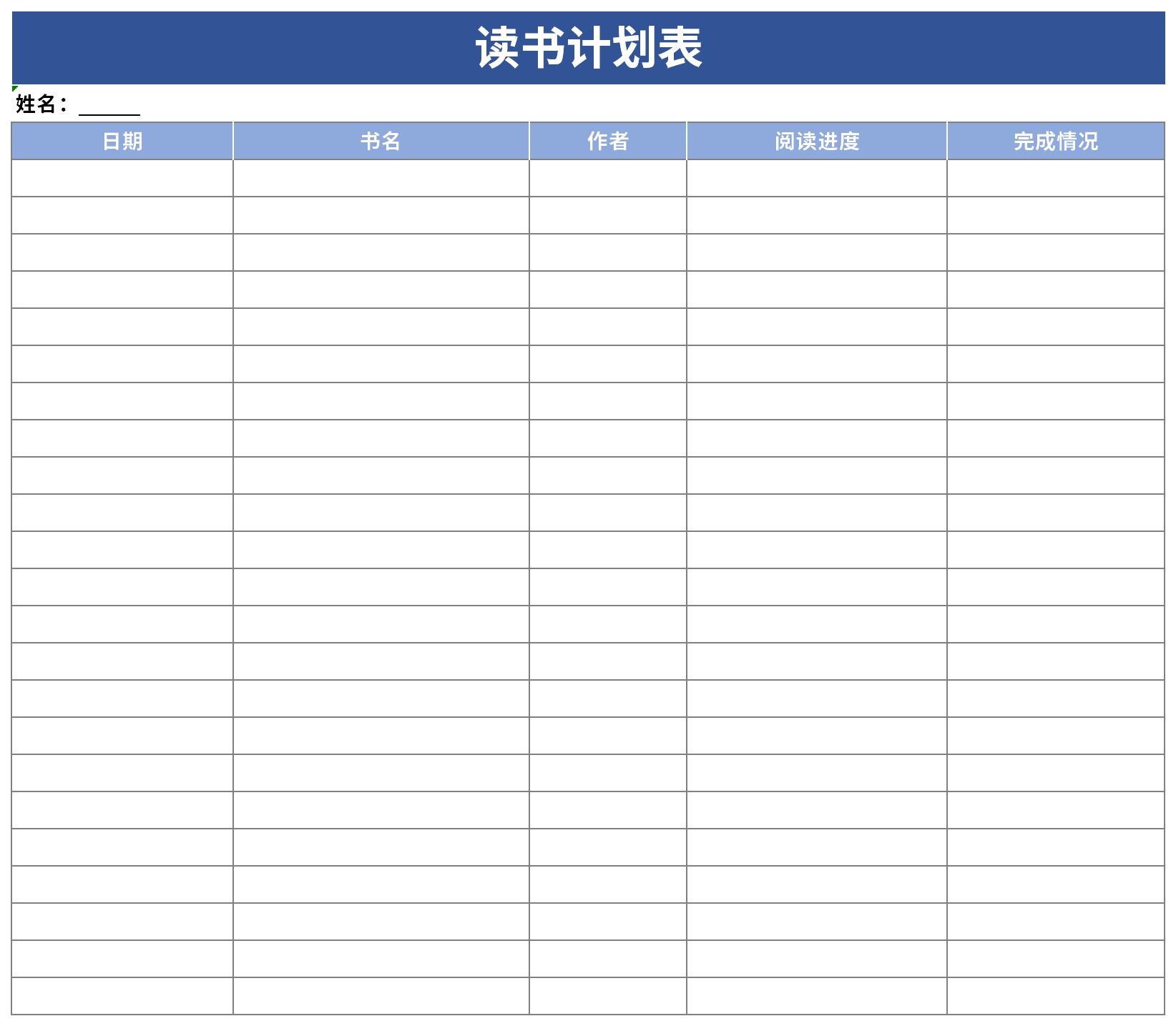 Tips for using reading schedule
Tips for using reading schedule
The role of reading schedule:
1. Plan goals. The goal is not a vase. You need to make a plan and achieve it in a down-to-earth and step-by-step manner. By planning and arranging time and tasks reasonably, you can achieve your goals and make yourself clear about the purpose of each task.
2. Implement the plan and learn that life is ever-changing and it always tempts you to be lazy. Developing a study plan can prompt you to carry out tasks according to the plan and eliminate difficulties and interference. Implementing a plan is a manifestation of willpower. Adhering to the plan can hone your willpower, and after your willpower is hone, your learning gains will be further improved. These improvements will only make you more confident and more successful.
3. Form a habit and act according to the plan to make your study and life rhythm clear. Therefore, you can study with peace of mind when you should study, and have fun when you play. Over time, all of these will form conscious actions and become good study habits. Improve learning efficiency and reduce time waste. Reasonable planning allows you to use your time more efficiently. You'll know what task you can't complete if you play for an extra hour, and how much of an impact that will have on you. With a plan, every step of the way is clear, and you don’t have to worry about what to learn later.
By pressing alt+Enter after a certain character in a cell, you can force the cursor to the next line.
2: Automatic line wrapping
After typing the text in the cell, find the "Automatically wrap" button on the toolbar and you can freely switch the text between wrapping and not wrapping.
3: Hide the chapter list
Select the first line, hold down [shift+F] to open the "Find and Replace" dialog box, "Remarks to find all, hold down shift+A to select all, then close the dialog box, hold down [ctri+0] to hide
4: Quickly select specific columns
Select the table area, click the "Create from selected content" dialog box under the [Formula] tab, select "First Row", after the settings are completed, open the name box in the upper left corner, click the corresponding list to jump to the specified column.
Two-column name verification
If you want to check whether the name in Table 2 appears in Table 1, a formula can be used to do it immediately.
=IF(COUNTIF(A:A,C2),"Yes","No"
Recommended by the editor of Huajun Software Park
reading scheduleIt is a very practical form, and most of the forms you fill in are for general purposes. If you happen to need to download a reading plan, please download it quickly. In addition,Changes to housing subsidy summary table,Graduate trainee training fund usage review formIt is also a good software. Welcome to click to download and experience it!






































Useful
Useful
Useful